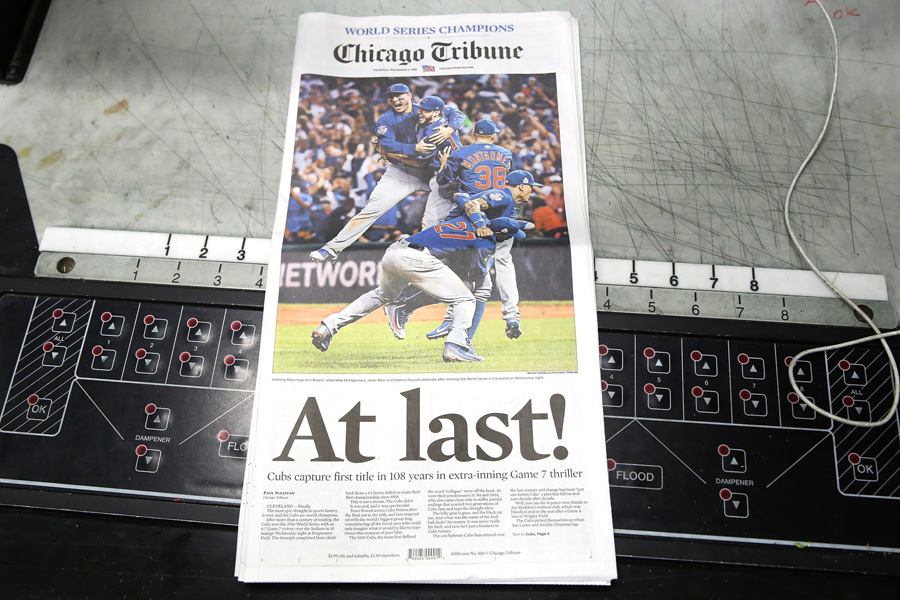The night the Cubs won the World Series, the Tribune printed 400,000 extra copies, then 300,000 more the following afternoon for a total print run of about 1 million. The Sun-Times printed almost 600,000 extra copies. The papers have since gone up on eBay for as much as $38, and some enterprising vendors are offering $50 packages for every series-winning issue.
These sought-after Wednesday editions are worth holding on to, so don’t just toss them in the attic and expect them to last. Here's how to ensure a long-lasting memento.
Special Treatment
Preserving newspapers is difficult because, according to the National Archives website, “newsprint is an inherently unstable medium.” Since the paper is processed in a less expensive way, it retains most of its lignin—a polymeric material that makes it more fragile. Ann Lindsey, head of conservation at the University of Chicago Library, points out that the 200-year-old newspapers at the library are in “rough shape” compared to some of the 900-year-old non-wood pulp papers they have in their collection. So be careful with your keepsake, which is made of a material “intended to be ephemeral," Lindsey says.
Keep It Cool, Keep It Dark
When storing newspaper or other paper items, Lindsey says it’s best to keep them in a stable and insulated (in terms of both temperature and humidity) environment. The Library of Congress recommends a cooler temperature and relative humidity around 30 percent to 40 percent. Lindsey warns against attics or basements, which are more prone to leaks, mold, and fluctuations in humidity and temperature.
And overexposure to light can cause images to fade, change color, or darken—so framing your copy on the wall in a sunny room might not be the best idea if you want your great-grandchildren to enjoy it someday. However, if you absolutely must have it on display, try framing it under ultraviolet-filtering glass.
Keep It Under Wraps
If using a paper folder to store, or "house," your keepsake, use one that is lignin-free and acid-free; look for suppliers that say they are museum or archival grade. Lindsey also recommends buying polyester film, such as Mylar or Melinex.
“If you’re looking for a plastic folder or container, you want 100 percent polyester or polyethylene. You don’t want anything that says acetate,” she says. If you just want to pick up something from your local art store, Lindsey recommends enclosing your newspaper in a 100 percent cotton rag matboard, which isn’t made of wood pulp.
Follow these tips, because who knows: it might just be another 108 years before we see a newspaper like this again.



